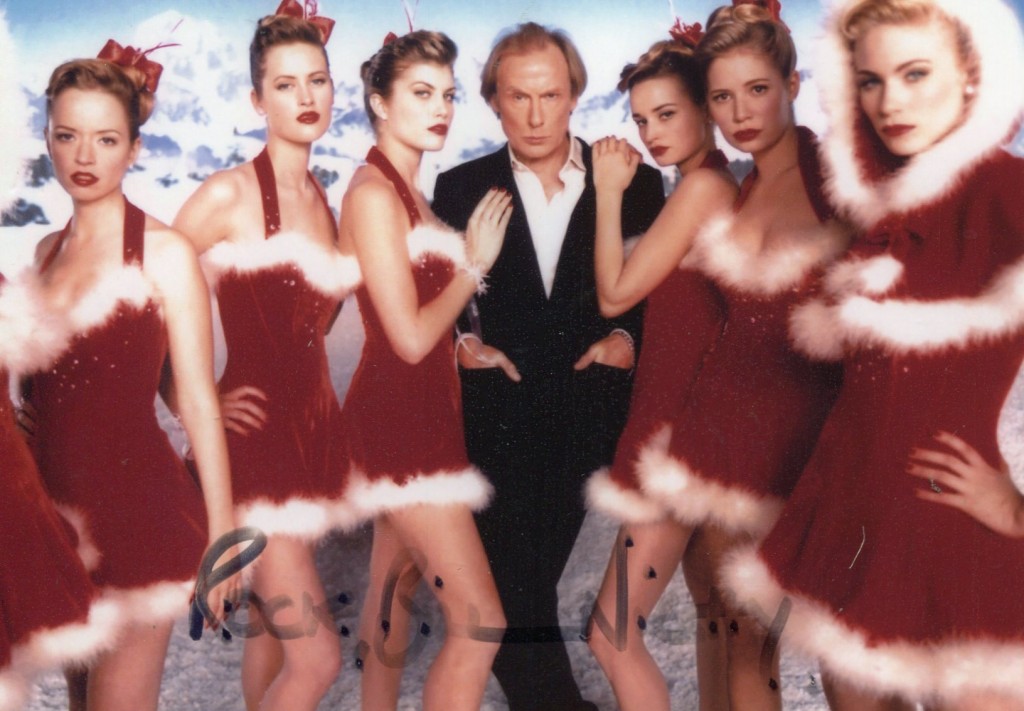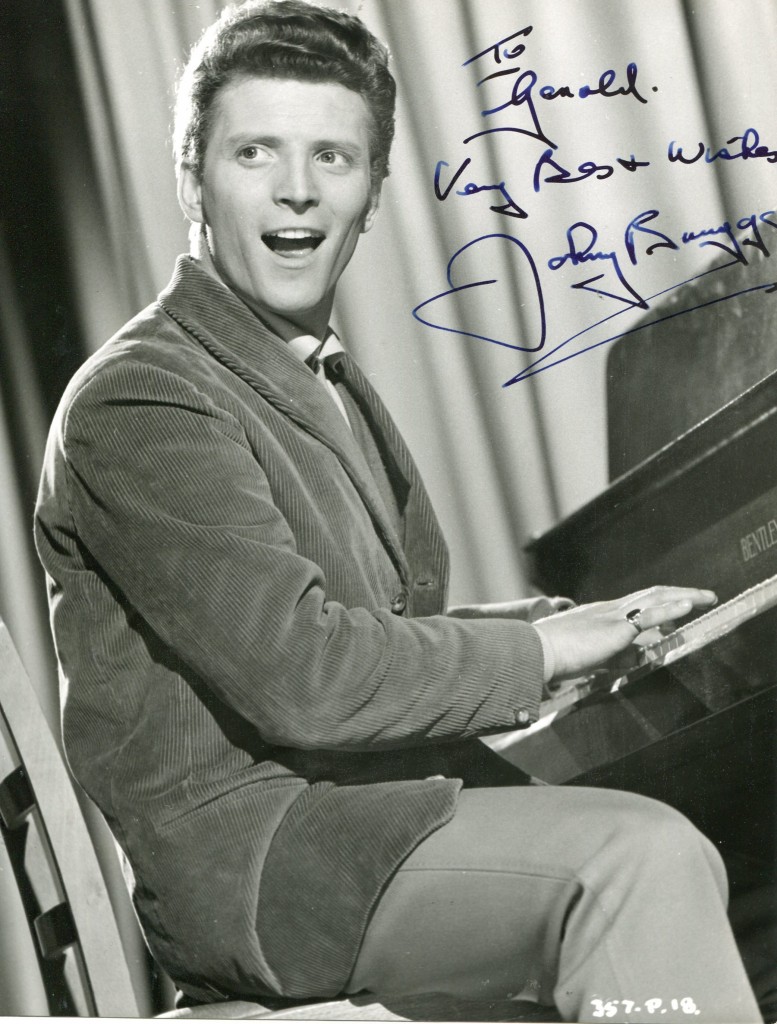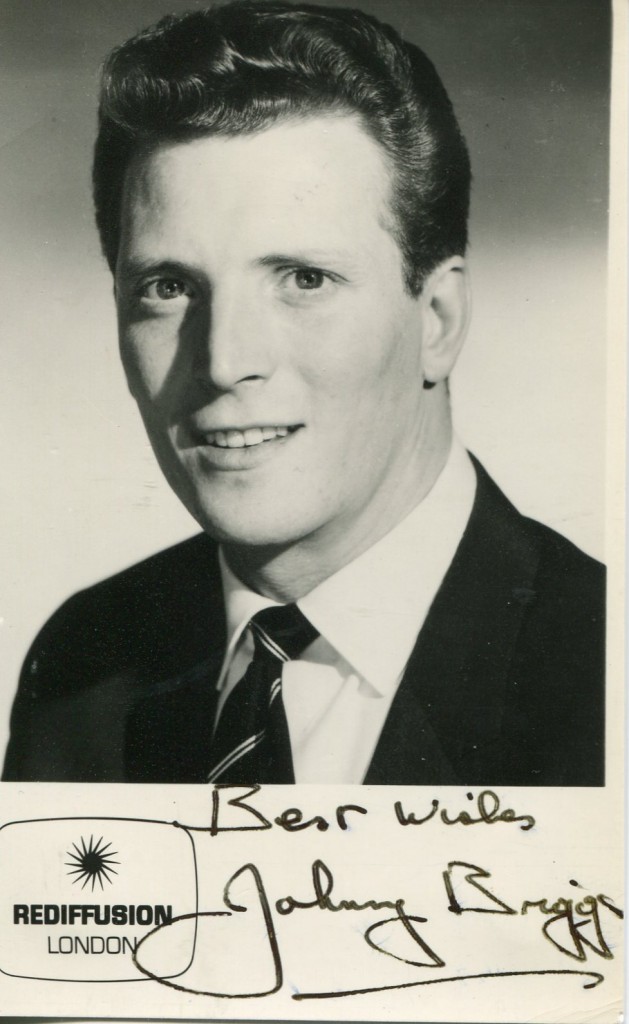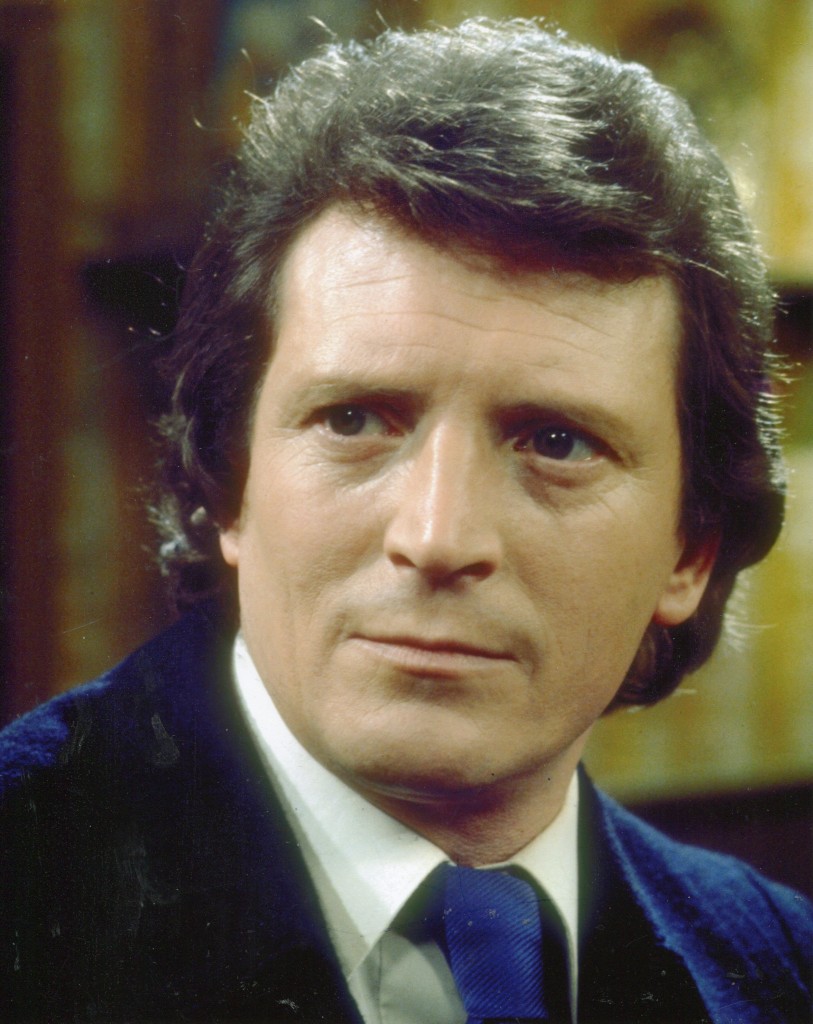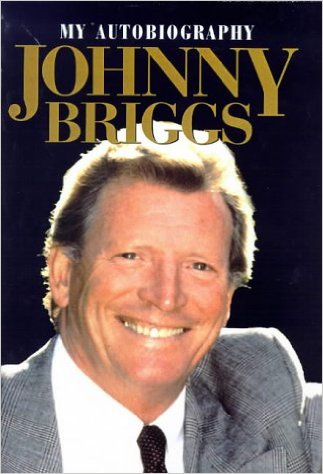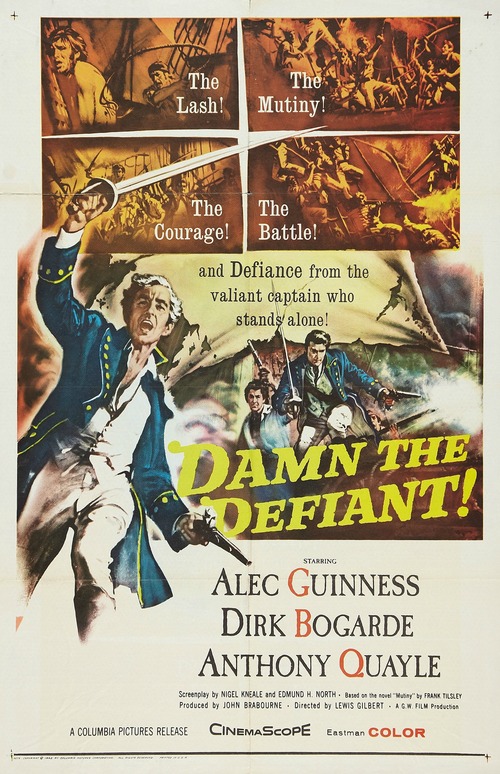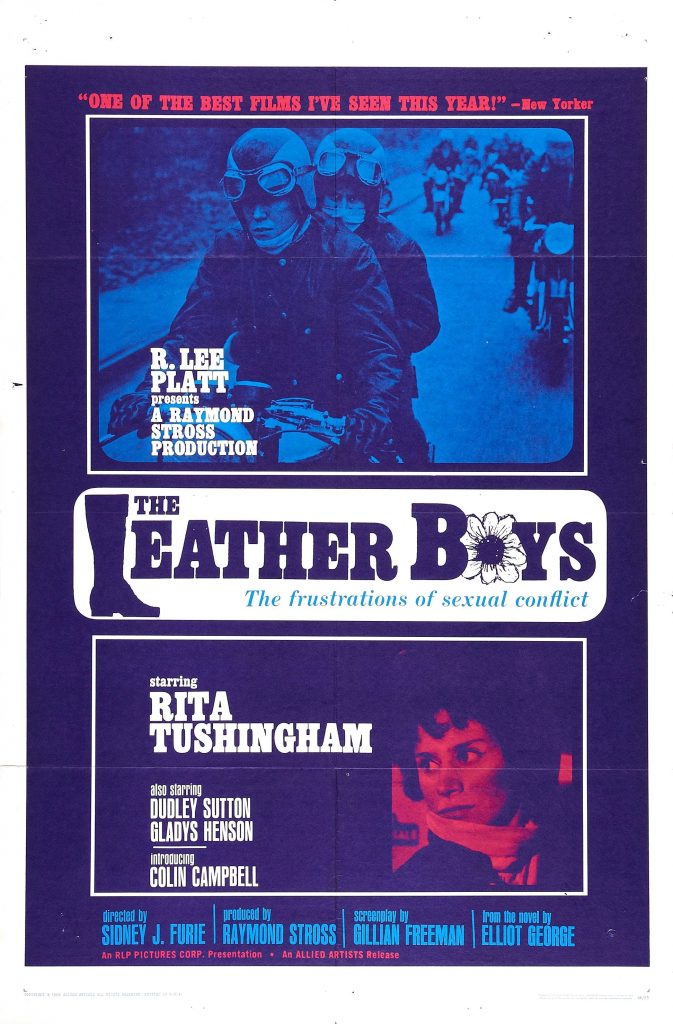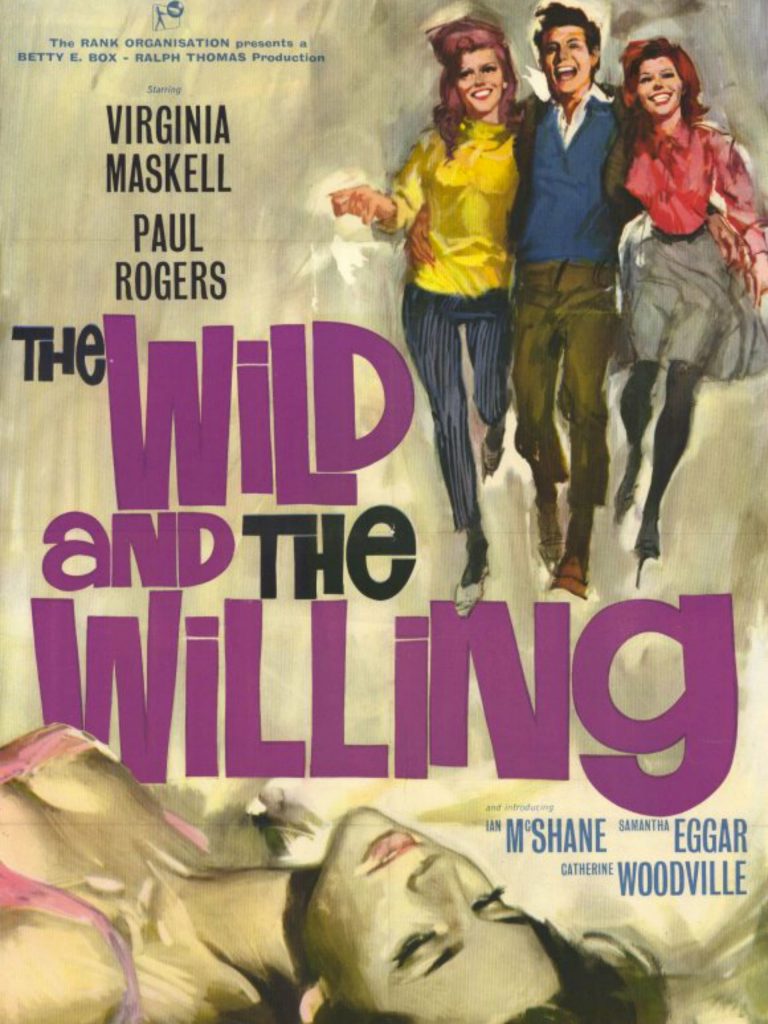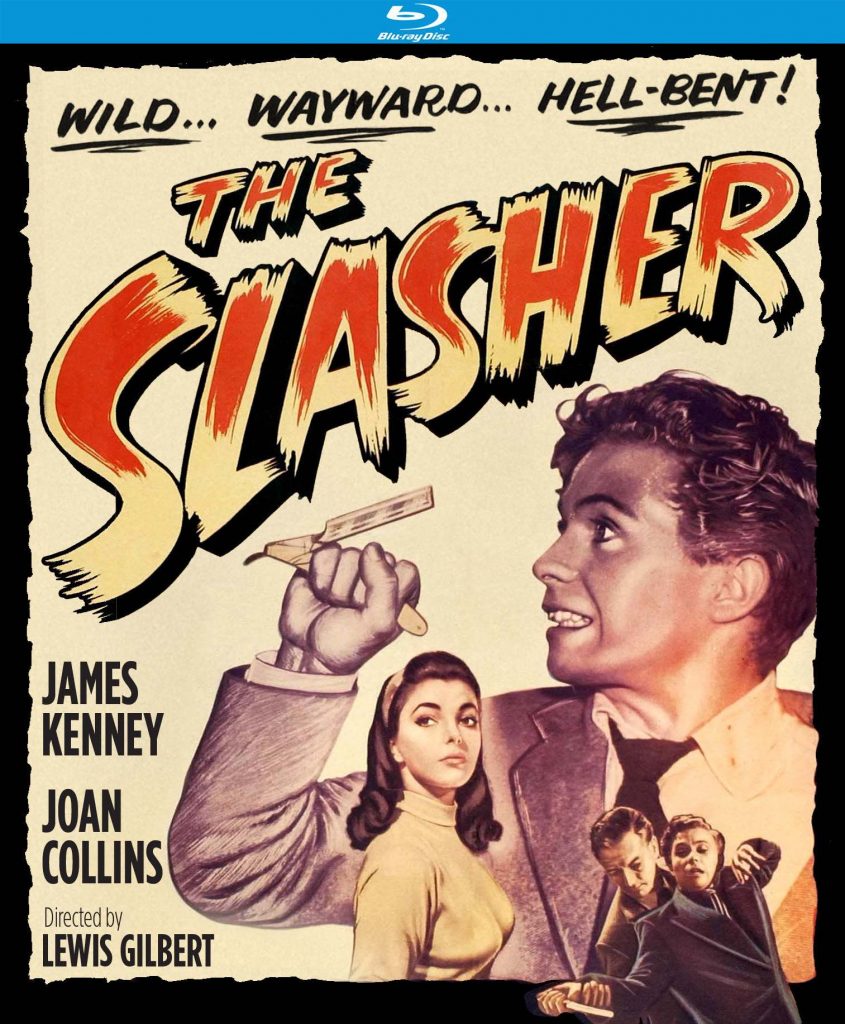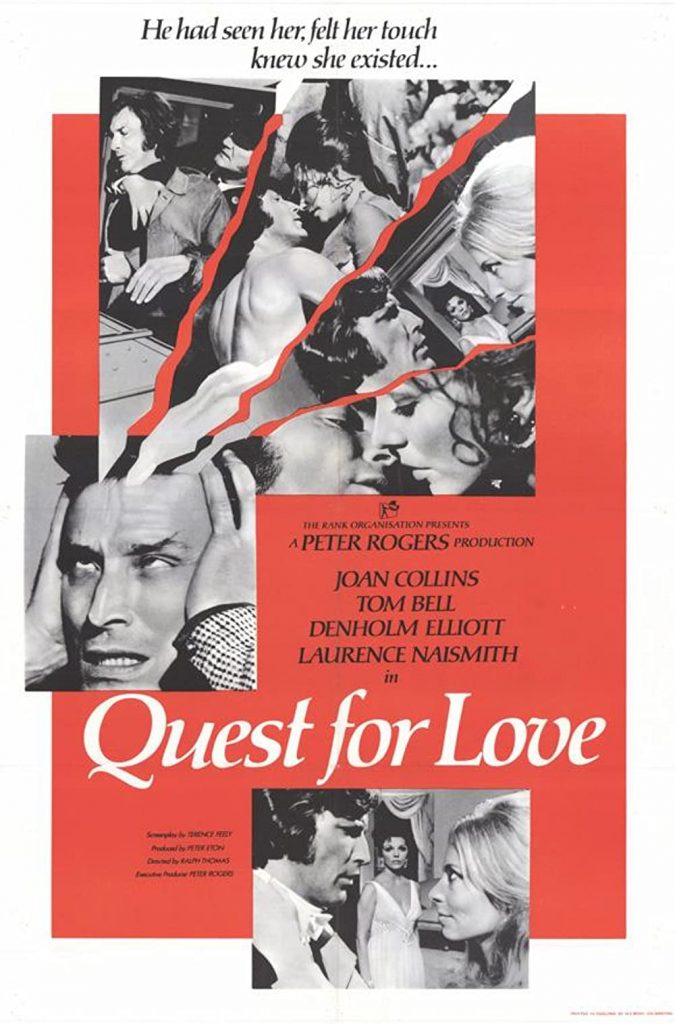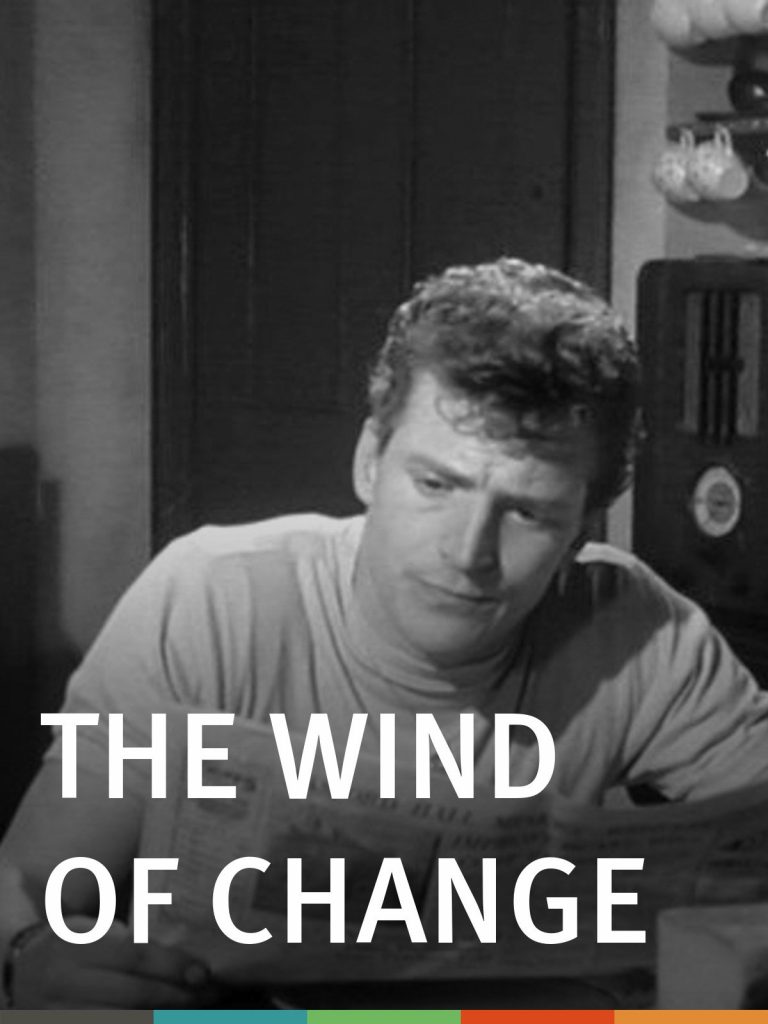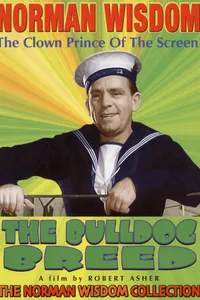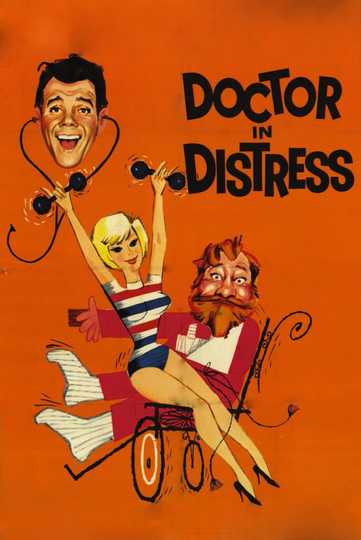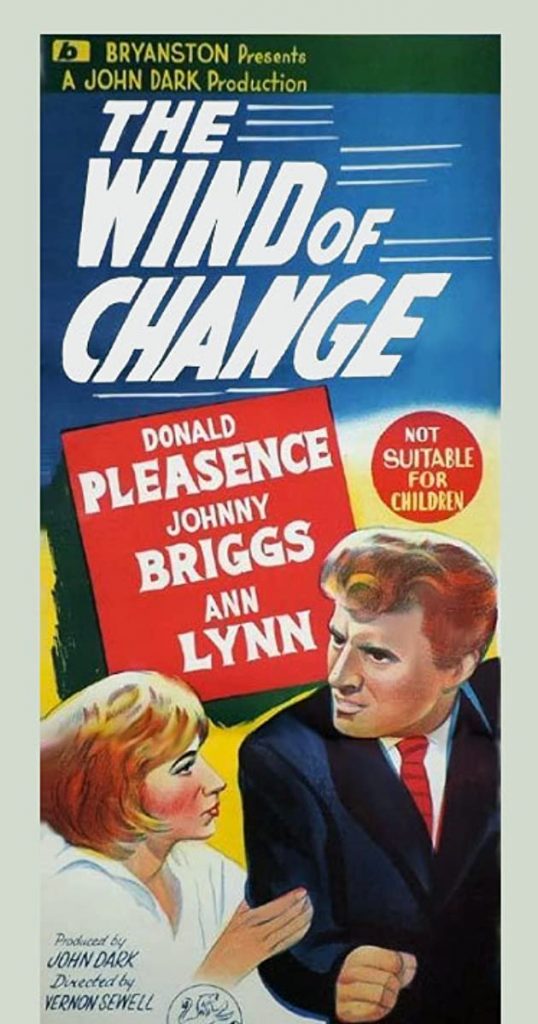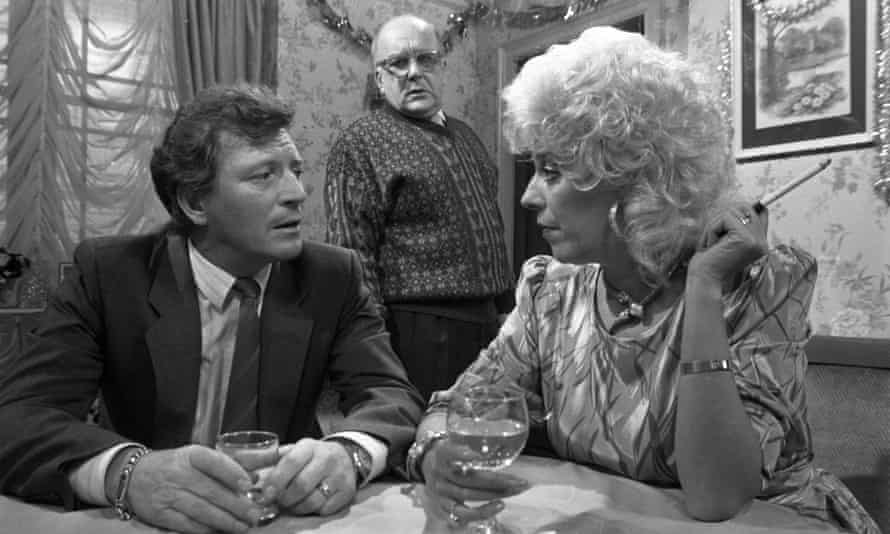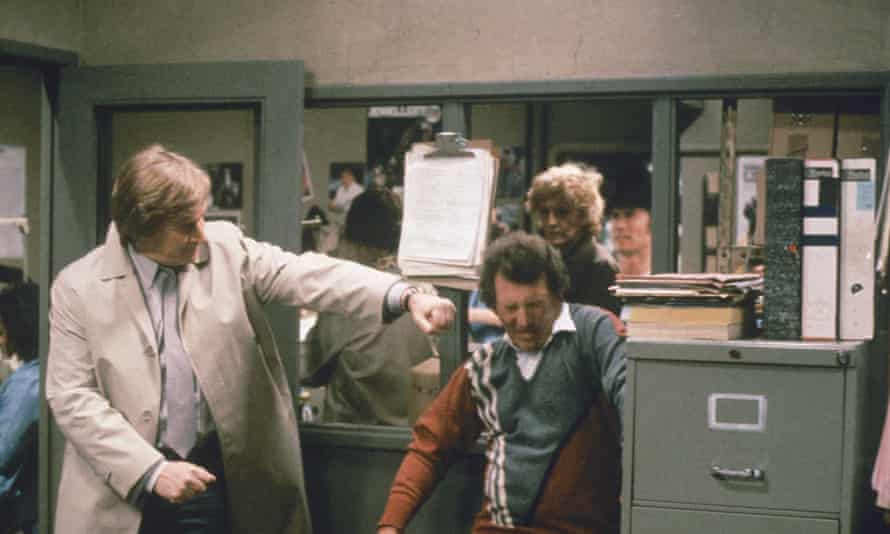



Article from 2009 in “The Guardian” by David Thomson:
James Mason had good friends, and sometimes that is the measure of a man, especially in the picture business, where it’s all too easy to lose contact as golden opportunities fade away. Consider his situation in the late 1940s. After giving his youth and his early beauty to British pictures and theatre, he decided to go to Hollywood. There must have been people who told him he was too patrician, too intelligent, as well as too old to break through in America. But he made wonderful contacts. There was a chance of doing the Svengali-Trilby story (with Jane Wyman), and Mason longed to have Jean Renoir as its director because he could see that the Frenchman loved actors. Alas, that project fell through, but then Renoir offered Mason the role of the wounded veteran in his Indian picture, The River. I can’t do it, sighed Mason; I’m set to play the male lead in La Duchesse de Langeais – which was to be the comeback picture for Greta Garbo.
Historians still argue as to why that picture collapsed. Advancing into his 40s, Mason had reason to think of bad luck as he played Erwin Rommel in a couple of movies, Rupert of Hentzau in a remake of The Prisoner of Zenda and “Hendrik van der Zee” in the dotty but deliriously beautiful romance, Pandora and the Flying Dutchman. In Britain, there were already superior figures in acting who marvelled over what was happening to “poor Jimmy Mason”. But as we come to celebrate today what would have been his 100th birthday, there are those who only wish there was more of Pandora, more Rommel and an entire picture about Rupert of Hentzau, the only interesting person in that whole Zenda nonsense.
In every decade, from the 1930s to the 80s, James Mason did some poor work in disappointing pictures, just as he missed out on mouth-watering opportunities. So, yes, it’s lamentable that he was to have been Prospero for Michael Powell, only for that Tempest to blow out. But don’t forget that their long friendship did lead somewhere: to Australia, for the quirky but vivid Age of Consent, where Mason was the film’s co-producer and he and Powell managed to discover the 18-year-old Helen Mirren to be the muse for the beachcomber painter Mason plays.
Yes, I know you can see Mason in these parts, but it’s just as evident that you hear him and, before we go any further, it’s vital to consider the unique and languid but impassioned voice of this man. Is it enough to say that he was a lad born in Huddersfield (the son of a wool merchant) who was sent to Cambridge to speak properly? Should we consider also his years on the Dublin stage as a prelude to his tragic figure in Carol Reed’s Odd Man Out – the film above all that promoted him from British pictures to a Hollywood player? Or is there not still something in Mason’s voice – aristocratic, but full of connoisseurship, too – that allowed the actor to become his true self just once, as the voice of Humbert Humbert in the film of Lolita? Humbert is not American. He is a scholar of comparative literature, as well as a judge of nymphets. He is a very bad man (if you like, or if you don’t like), but he may be the purest-spoken scoundrel in all the movies. For he has to deliver Nabokovian prose as if to say it was the most normal and sensible way of speaking the English language yet invented.
So Mason could be lord and nobleman, a very upper-class fellow – he did that from his Flaubert in the silly MGM production of Madame Bovary to Brutus in the same studio’s Julius Caesar, from Mr Jordan in Heaven Can Wait to the “prince of darkness” lawyer, Ed Concannon, in The Verdict. He could say something to another person so that one word seemed like a lash or a curare dart delivered in slow motion. This Mason was Mr Elocution, if you like, the personification of affectation and lingering insult or innuendo. But the same voice could burn with conviction – it does in Lolita, when he talks to his Lo, just as much as it did in A Star Is Born, with Judy Garland, in North By Northwest, with Eva Marie Saint, or in The Reckless Moment, with Joan Bennett, where he has the fine judgment to know that he is falling in love with the woman he is supposed to blackmail.
Pause over North By Northwest a moment. Why is it that, over the years, that crazed film calmly urges itself forward as maybe Hitch’s most entertaining picture? Well, of course, it’s the demented plot by Ernest Lehman, with the cornfields of Iowa leading to Mount Rushmore. And it’s also Cary Grant. But run the picture in your head a moment and isn’t it Mason’s voice you hear as Vandamm, the villain? Look at it again, if you doubt me – he’s the heart and head of the picture, and he is delighted to realise that North By Northwest is a frolic, a dance in mid-air, a fabulous absurdity. Of course, we love Grant and Saint and everyone else in it, but just look at Grant’s face and see the pleasure he feels at being placed beside so sublime a screen being as James Mason. (Time for a joke: in the year for which North By Northwest was eligible, 1959, Charlton Heston and Hugh Griffith won the acting Oscars for Ben-Hur.)
Mason never won an Oscar, though he was nominated three times – for A Star Is Born, The Verdict and Georgy Girl (the latter one of those pictures where he let his Yorkshire accent run riot and where, apparently, he took a deep shine to his co-star, Lynn Redgrave).
You might have thought that in a thousand words (so far), I’d have been able to mention all the worthwhile Mason films. But I haven’t even touched the Gainsborough period yet. In the war years (when Mason was a conscientious objector), he defined a new type in British pictures – the handsome, cruel mastermind who is irresistible to women. That is the Mason of The Man in Grey, a costume romance, where he dismantles Margaret Lockwood and Phyllis Calvert; The Wicked Lady, where he and Lockwood are highway robbers; and the cult classic, The Seventh Veil, where he is Ann Todd’s unkind guardian.
The same years include two other remarkable films: A Place of One’s Own, where he is the elderly husband, and The Upturned Glass – a film that Mason helped write – about a doctor fascinated with the psychology of murder. To say the least, that side of Mason – the mind that had ideas for films – was what made him most endearing to directors.
Once in America, he forged bonds with two of the least likely artists. First, he fell for Max Ophuls, effectively in exile, and did two films for him: Caught and The Reckless Moment. In the first, he is the doctor with a busy urban practice who takes in Barbara Bel Geddes as a secretary when she flees from her marriage to the tyrannical Robert Ryan. In The Reckless Moment, he plays a weak-willed villain, a man whose blackmail plans are thwarted by his own sentiments.
In both cases, Mason’s struggle to be decent and ordinary provides a foundation for the film. Equally, in every situation, Mason was the defender of Ophuls, a high-strung, stylistic perfectionist who was having a hard time in Hollywood.
A few years later, Mason became friends with another movie director, and an even more self-destructive man, Nicholas Ray. They wanted to do a story they had seen in the New Yorker about an idealistic teacher who is warped by his addiction to cortisone. The result, Bigger Than Life, is one of the great American films of the 50s, in which Ray’s dynamic use of colour and form is steadily attached to Mason’s tragic performance. In the slow reappraisal of American film by American critics, it’s worth saying that Caught, The Reckless Moment and Bigger Than Life (none of which was a hit) have now become standards by which other films are judged. In all these cases, the completion of the picture, as well as its initiation, owed a lot to the creative vision of an actor who was serving as an extra producer.
Is that all? By no means. To the end of his time (he died in 1984), Mason was doing intriguing small films such as Dr Fischer of Geneva and The Shooting Party. He was the star of works as different as The Deadly Affair, Mandingo, Cross of Iron and The Seagull (where he played Trigorin). He made Cry Terror! and The Decks Ran Red for that master of suspense, Andrew L Stone.
He was Sir Edward Carson to Peter Finch’s lead in The Trials of Oscar Wilde. He was toxic in The Pumpkin Eater and cool syrup in The Fall of the Roman Empire. He made every trashy costume seem as natural as a good suit and, for all his life, he seemed carried forward by the odd mixture of yearning and fatalism that prompted Humbert Humbert.
Graham Greene called it the marriage of sadness and pride. It is still there, to be treasured in something like 40 special films.
Odd Man Out (1947)
After making his name as the dashing, cruel-eyed star of wartime period costume pics, Mason did a 180-degree turn to play an made gunman staggering wounded through Belfast. Director Carol Reed assembles an arsenal of expressionist techniques to make this an early, and effective, British noir.
North By Northwest (1959)
Arguably Hitchcock’s finest, and maybe Mason’s, too – even though he didn’t have the lead role. Here he plays super-smooth microfilm smuggler Vandamm, egging on henchman Martin Landau to dispose of pesky Cary Grant and Eva Marie Saint.
Lolita (1962)
Nabokov’s professorial paedophile terrified the life out of Hollywood’s star names, but Mason stepped up to play Humbert Humbert for Stanley Kubrick.(Both Laurence Olivier and David Niven turned it down.) Mason’s stuffed-shirt reticence, allied to his lasciviously clipped vowels, made him ideal for the role.
Mr James Mason, who died yesterday in Lausanne, Switzerland, at the age of 75, was a highly intelligent and creative cinema performer who appeared in more than 100 films. And though many of them were unworthy of his talent he could lift the poorest material just as he could enrich the best. He made a reputation in parts calling for moody and tyrannical introspection, notably as Ann Todd’s sadistic guardian in The Seventh Veil, before maturing into a versatile and dependable character player.
One of his best performances came under Sir Carol Reed’s direction in 1947, when he played a dying gunman on the run in Belfast in Odd Man Out. Soon afterwards, expressing his disenchantment with the British cinema, he left for Hollywood where, after a difficult start, he successfully built a new career.
James Mason was born in Huddersfield on May 15, 1909, the son of a textile merchant. He was educated at Marlborough and Peterhouse College, Cambridge where he took a first in architecture and got a taste for acting. His professional debut was at the Theatre Royal, Aldershot, in 1931 and two years later he made his first London appearance in Gallows Glorious at the Arts Theatre. He joined the Old Vic company and then the Gate Theatre in Dublin, where he played between 1934 and 1937.
He entered films in 1935, playing a reporter in Late Extra, but for several years most of his parts were in low budget “quota quickies”. In 1939, with two friends, Roy and Pamela Kelli-no, he set up his own film, I Met a Murderer, a crime story in which he was the killer of the title. He and Pamela Kellino were married two years later.
During the Second World War, he worked with ENSA and his film career finally took off through a series of costume melodramas which gave him the opportunity to create a memorable gallery of suave and vicious villains. The film that made him into a star was The Man in Grey, in which he took a whip to Margaret Lockwood; Fanny by Gaslight, They Were Sisters, and The Wicked Lady, also with Margaret Lockwood, followed in similar vein.
The Seventh Veil proved to be the most successful of all and from 1944 to 1947 Mason was voted Britain’s top box-office star. Among those who admired his performance in The Seventh Veil was the veteran American director, D W Griffith. But Mason had become increasingly unhappy with the films he was bing offered, and with what he saw as a monopolistic stranglehold on the industry by J Arthur Rank; and at the peak of his popularity he departed for Hollywood.
It was to be some time before the move paid off. Mason’s outspokenness did not endear him to Hollywood and his choice of parts was not always happy. He appeared in two films for the emigre director, Max Ophuls, Caught and The Reckless Moment, and made a splendid Rommel in The Desert Fox; while his Brutus in the 1953 production of Julius Caesar helped to make it one of the best screen versions of Shakespeare.
But it was not until 1954 when he played opposite Judy Garland in George Cukor’s remake of A Star is Born that he managed a major performance, a harrowing study of a man’s tragic decline, for which he gained an Oscar nomination. He brought the same nervous intensity to the part of a drug addict in Bigger Than Life (1956), a film which he also produced.
The best of his later roles was Humbert Humbert in Stanley Kubrick’s film of the Nabokov novel, Lolita, which appeared in 1962. To his portrayal of a middle-aged man’s infatuation with a 12-year-old girl, Mason brought a degree of sympathy, combined with wry humour, that few other actors could have managed. With Odd Man Out, it ranks as his outstanding screen achievement.
Three years earlier he had been a memorable villain in Alfred Hitchcock‘s North by Northwest and had given an engagingly tongue in cheek performance in an adaptation of the Jules Verne story, Journey to the Centre of the Earth. He maintained a prolific output through the 1960s and 1970s, making two and three films a year, though many were routine assignments easily, and perhaps best, forgotten.
There was still, however, much to relish. His Timonides in The Fall of the Roman Empire was a bright spot in an otherwise dreary epic and he had good supporting parts in The Pumpkin Eater and as Gentleman Brown in Conrad’s Lord Jim. He added to his stock of German officers inThe Blue Max (1966) and in the same year he was in Georgy Girl, a story of the “swinging sixties”, and a John Le Carre thriller, The Deadly Affair.
In 1969 he turned producer again for Age of Consent, directed in Australia by Michael Powell; but a long-cherished Powell project, The Tempest, with Mason as Prospero, proved abortive. The martinet Yorkshire father in Spring and Port Wine was a tailor-made part, there were more Germans in Cross of Iron and The Boys From Brazil and a well judged Mr Jordan in the fantasy, Heaven Can Wait. He was superb as the old tutor recalling his days in India in James Ivory’s Autobiography of a Princess.
Once he became established in films, Mason returned only occasionally to the stage. He was in an unsuccessful Broadway play, Bathsheba, in 1947, and during the 1950s played Angelo in Measure for Measure and Oedipus in Oedipus Rex at the Shakespeare Festival in Stratford, Ontario.
.




































